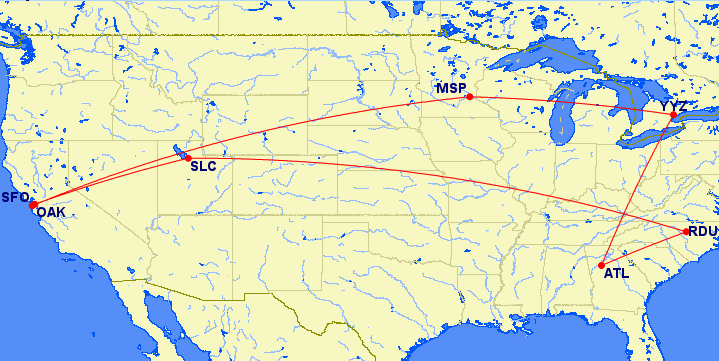 Nearly my entire adult life I’ve traveled in some form or another. In a band you drive on tour, and even when I was dating my wife I would drive from Florida to Virginia nearly every other weekend. So when it comes to traveling I have a very experienced sense of what it’s going to take when I decide “drive or fly” – and usually that means I drive if I can get there in 5 hours or less.
Nearly my entire adult life I’ve traveled in some form or another. In a band you drive on tour, and even when I was dating my wife I would drive from Florida to Virginia nearly every other weekend. So when it comes to traveling I have a very experienced sense of what it’s going to take when I decide “drive or fly” – and usually that means I drive if I can get there in 5 hours or less.
In our organizations, we face similar decisions – typically the “build versus buy” decision. When we want to do something we have to figure out whether we start an internal initiative to build it or purchase and configure something from a vendor. Or in a larger context, whether we simply acquire someone already in a space we want to be in.
In the book Stand Back and Deliver: Accelerating Business Agility Kent McDonald and Neil Nickolaisen present a model called the Purpose-Based Alignment Model for aligning business decisions around one of two purposes – market differentiation or maintaining parity based on the mission of the business.
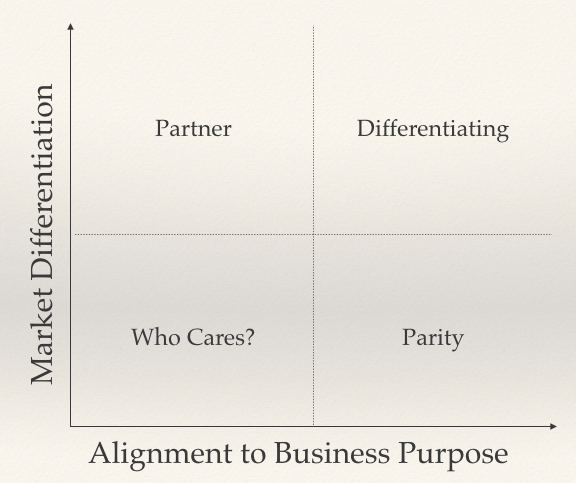
The goal is to help us figure out how we should make certain “plays” in our business. I’ve talked before about developing a map to understand what plays were available in a hypothetical situation where the CEO has come to us wanting to do “something in the Internet of Things space”. At the conclusion we had the following map:
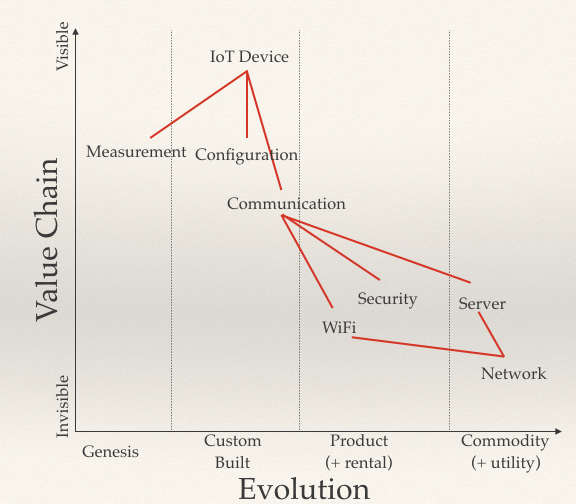
We also said we could make a play for the measurement, configuration and communication components. But what wasn’t answered was how we should make those plays. Let’s place those components into the various quadrants based on who we are as an organization:
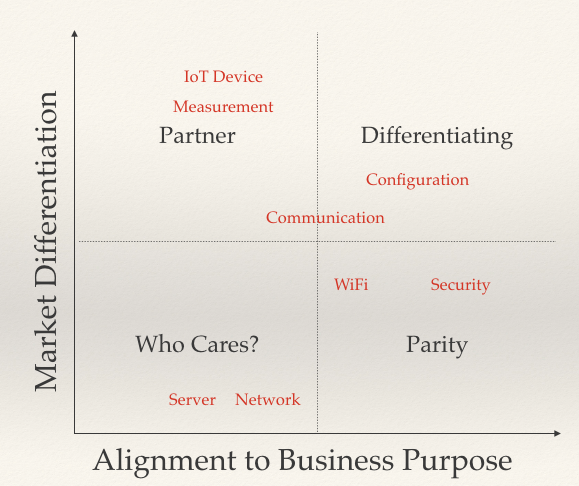
- Both the Server backend and the Network don’t really differentiate us in the market, nor do they really push who we are as an organization forward. So really what matters is whatever works for us.
- Wifi and Security do matter, because people don’t want to run ethernet cables outside, and they don’t want their devices hacked. We don’t need to do anything super innovative here, but we should be on parity with other offerings
- Both the IoT Device and the Measurment components aren’t really a core part of our business model, but they do differentiate us in the market. Therefore we want to find a trusted partner to build them or let us buy from.
- Configuration and Communication are a core part of our offerings, and differentiate us in the market, so we should ensure our focus is on these.
Does this mean we shouldn’t buy things to help us with components in the Differentiating quadrant? Not at all! Instead it means we shouldn’t just outsource it – we need to own the Intellectual Property so we can drive the evolution of the component. Basically we want to develop the capabilities in those areas, so we should invest in building those capabilities out.
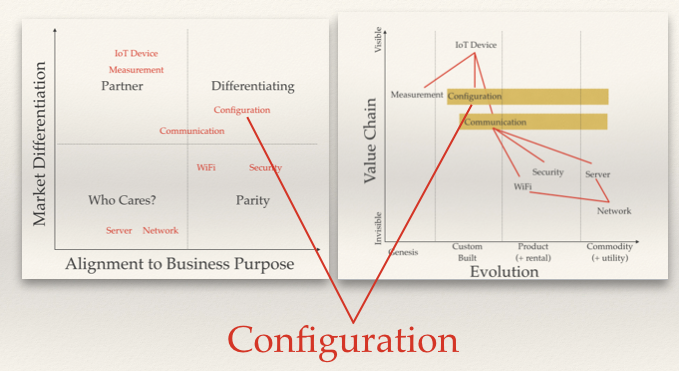
Taking together with the Wardley Map we can see that so far we have a strong agreement that the play we can make is in the Configuration and Communication spaces. And we have a sense that rather than purchase that capability, we should own that expertise in-house, either through building it, or acquiring a company who has it.
On a lower level, I tend to use this model as a way of helping smaller organizations figure out where to spend their time. For example, if their strong innovation comes from user experience, then they may find strength in partnering for development. However, if the innovation comes from the development they are doing, then they should focus on growing it in a high-quality way.
For more information I’d recommend picking up Stand Back and Deliver: Accelerating Business Agility or skimming Kent’s article on it. You can also watch a talk I gave on combining mapping, purpose-based alignment models and the Business Model Canvas. Finally, if you’d like help mapping your organization, give us a shout!